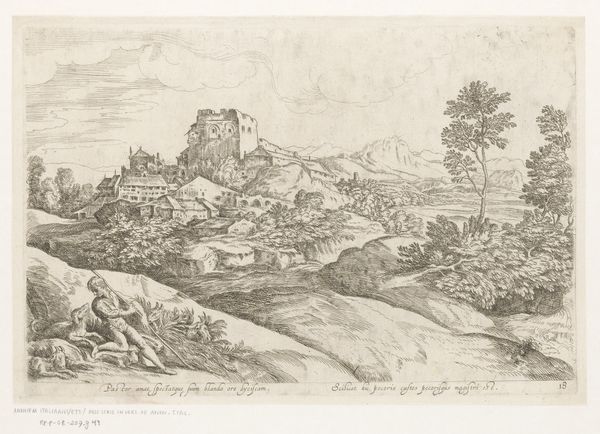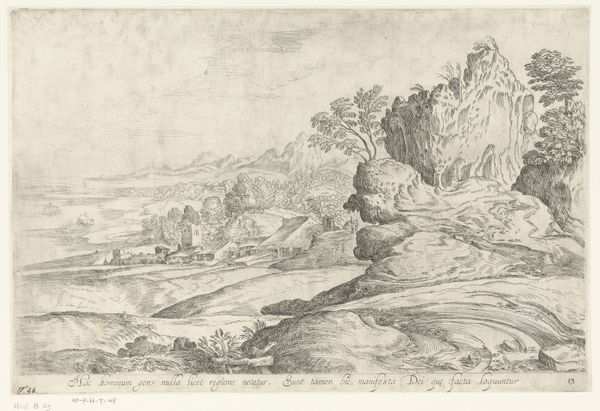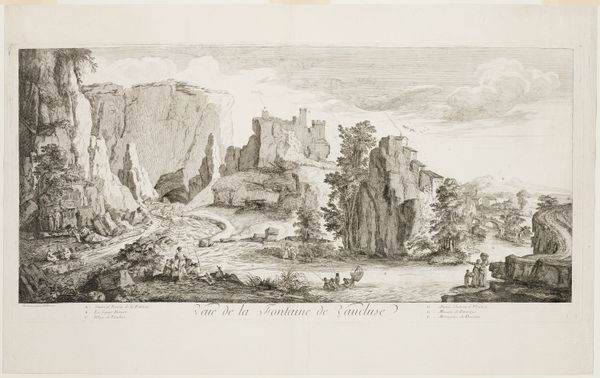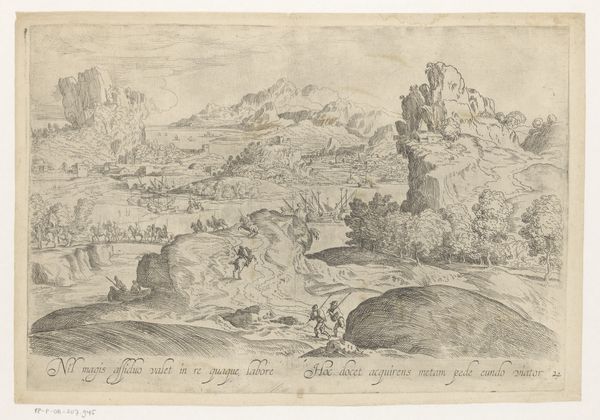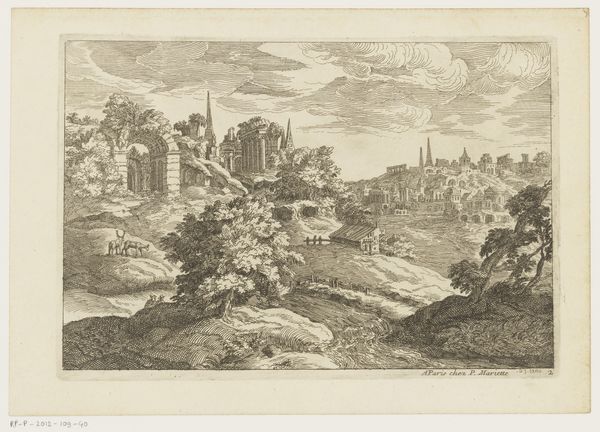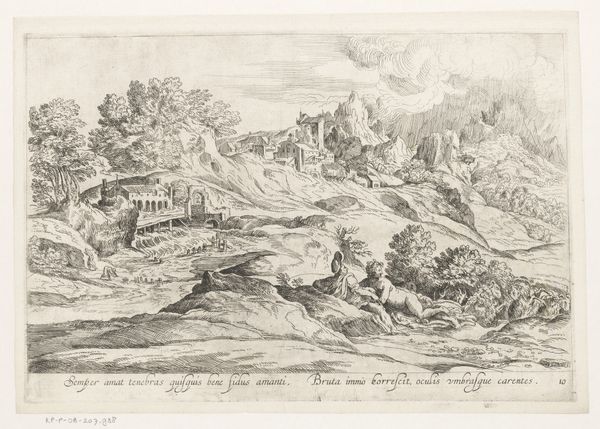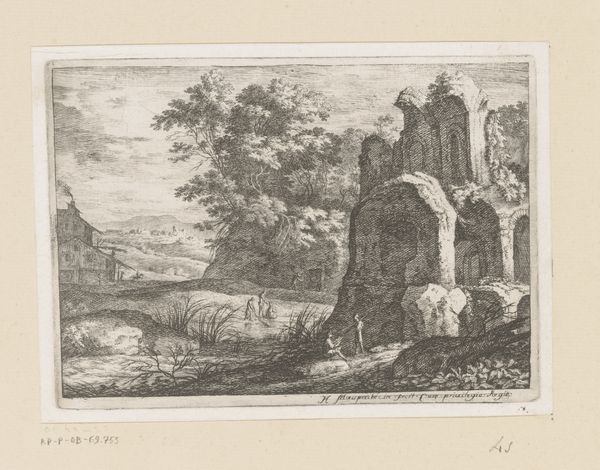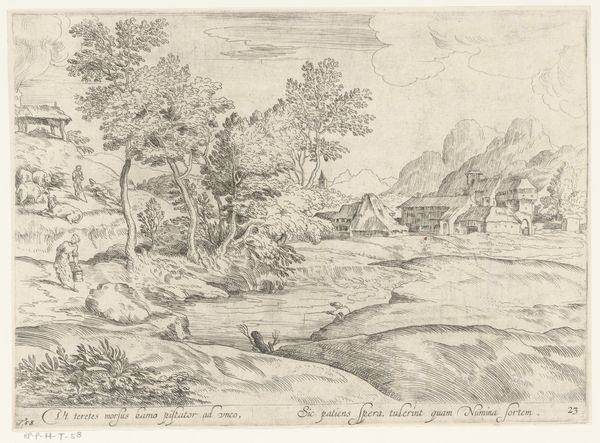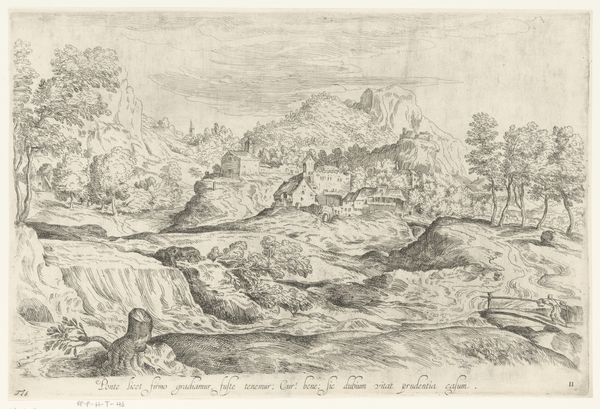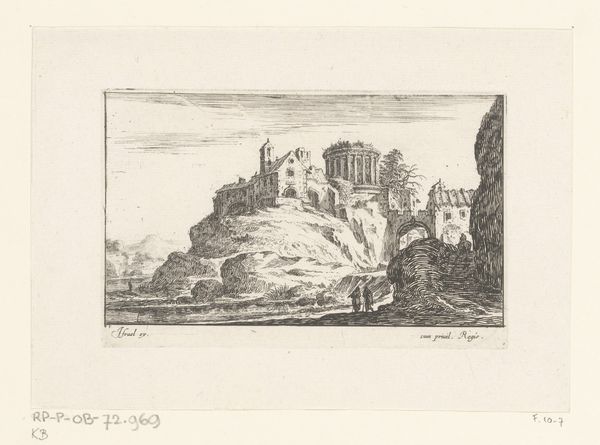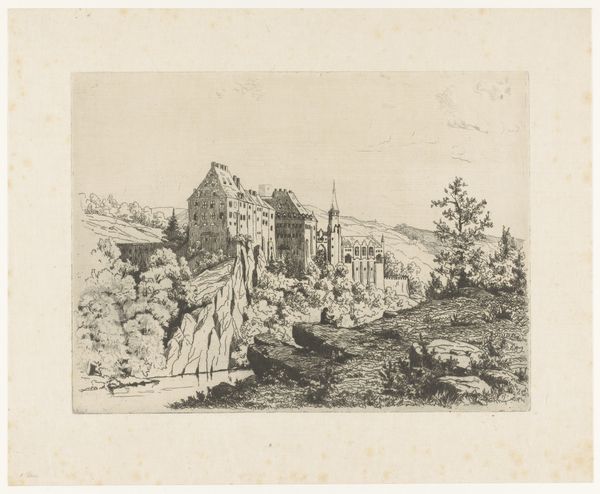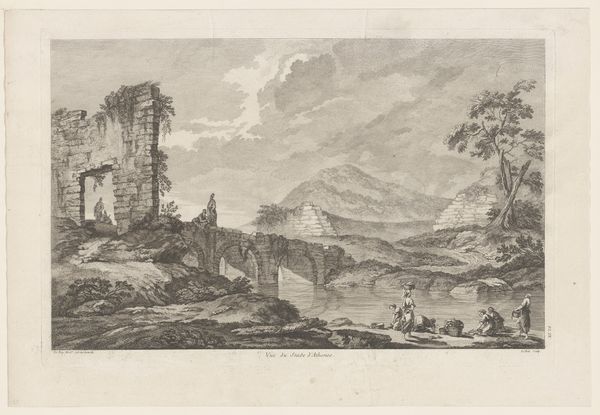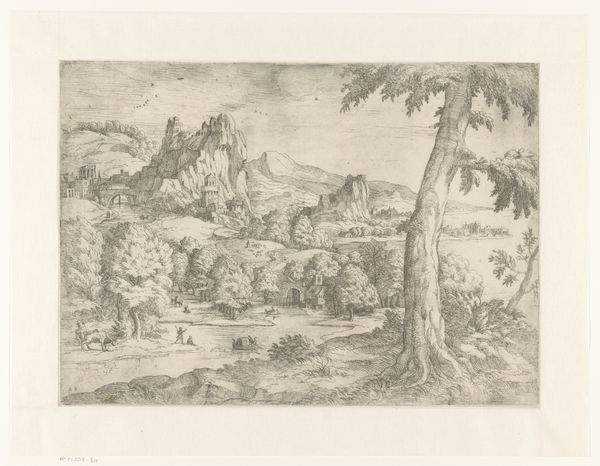
print, etching
#
baroque
# print
#
etching
#
old engraving style
#
landscape
#
etching
Dimensions: height 281 mm, width 402 mm
Copyright: Rijks Museum: Open Domain
Curator: Jean-Baptiste Corneille gives us "Landschap met steile heuvel", dated sometime between 1659 and 1695. It's rendered as a print, specifically through etching. Editor: My immediate impression is one of profound depth created by those varied lines. They give it such an evocative, almost dreamlike, quality. It's really compelling how those fine lines construct the forms. Curator: Indeed, the baroque landscape aesthetic is rather apparent in the etching style—the sweeping vistas, dramatic light. Do you notice the human figures? Corneille embeds elements that speak of human toil amidst such a vast landscape, thus telling a specific kind of story of the times. Editor: I do! But what’s really fascinating is the contrast in the mark-making. See how he uses a denser, almost frantic etching for the foreground elements like the rocky terrain and those trees? The way those details fall off with depth of field only amplify its dynamism. It has movement through purely visual manipulation. Curator: That stylistic choice would also play a socio-cultural role back then, because baroque's inherent dynamism was associated with grandeur, power, often mirroring the social structures and ambitions of royalty and aristocracy during the era. Editor: Do you think, through these intense visual contrasts and the layering of such intricate detail, the artist creates a tension between the observable and the subjective, questioning whether he is celebrating nature itself, or imposing an aesthetic sensibility onto the natural world? Curator: Yes! Absolutely, one could also consider the material impact – etching lent itself to wider reproduction, thus democratising landscape appreciation and art ownership at the time, thereby affecting societal access. Editor: All this textural dynamism…It's just incredible how the sheer meticulousness shapes our reading of the whole image! Curator: And seeing its lasting contribution to landscape aesthetics makes engaging with this work truly worthwhile, I would argue. Editor: I concur. We’ve really untangled layers that exist beyond mere depictions of pastoral harmony.
Comments
No comments
Be the first to comment and join the conversation on the ultimate creative platform.
